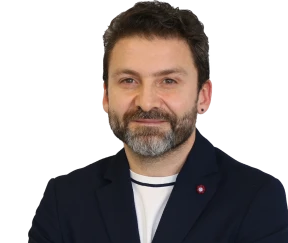What Are The Filling Materials?
In years, there happens changes on our faces due to gravity, sun exposure and effects of face muscle movements (smiling, chewing etc.). Smiling lines, goose foot or face wrinkles emerges on areas where these muscle movements take place. Most frequently used soft tissue fillings hyaluronic acid and fat can help filling these lines and wrinkles. Additionally, they can be used as lip and cheek fillings as well. Filling materials can be used solely or together with other procedures like laser treatment, face lifting.
What Are Filling Material Types?
Hyaluronic acid is a natural material in our bodies. It is suitable to fill face wrinkles like lips and nasolabial folds. At the same time, it can be suitable for some surface wrinkles and concave traces. Results may take 6 months or longer.
Hydroxyapatite is a filling material with mineral-like structure naturally existing in human bone. It can be used for filling deep nasolabial folds, lines at the edge of lips, and to increase increase fullness of cheeks and other parts of the face.
Fat tissue can be re-injected to fill wrinkles and fix contours after being taken from the person’s own body. Fat injection requires a more comprehensive procedure compared to other filling materials. Because it needs to be taken by liposuction method first and then needs to be prepared for injection.
Who Are Eligible Candidates For Filling?
Filling materials are suitable options for patients who want to fix wrinkles on their faces or increase fullness on certain areas. Filling material injection to these areas increases volume and creates a more youthful look by fixing contour. Your plastic surgeon will determine the suitable facial rejuvenation method by revising your concerns and desired changes as well as your medical history.
What Are The Purposes Of Use Of Filling Materials?
One of the important points to be considered regarding filling materials is that their results are not permanent. Injected filling material is metabolized by body.
In some people the results can last for a couple of months, in some others filling materials can last longer. It is believed that age, genetic substructure, skin quality and life style have an effect on filling material’s period of remaining in body. It is hard to determine the exact reason of filling material’s period of effect among patients.
It helps facial rejuvenation by reducing signs of aging like wrinkles under eyelid, mouth edge and around nose. At the same time, it improves contour by increasing volume at some parts of face. However, filling materials do not stop aging process.
What Is Done During Filling Material Injection?
Facial rejuvenation is a personal procedure, and current situation of your skin structure, wrinkles and face contour will be evaluated in detail during the first examination by your plastic surgeon. Your medical history, your allergy for medicines will be checked. The most suitable treatment options will be determined by also taking your expectations into consideration.
Filling material injection is a 10-20-minute procedure in medical clinic environment. If other surgical procedures will be operated, they can be operated at the same time. Hyaluronic acid injections can be operated with use of cream with effect of local anesthesia before the procedure or with local anesthesia under nerve block. Fat injection can be operated with local anesthesia or sedation to transmitter and transmitted areas.
How Is The Recovery Period Of The Procedure? How Long Resting Is Needed? When Can You Continue Exercising?
While many patients immediately can go back to their daily activities, sometimes short-term resting may be needed. In the application region, there may be light swellings and bruises and they generally recover in 1 or 2 days. During this period, it is important to avoid sun exposure. Many patients can go back to work within 1 or 2 days. During the recovery period, tiring physical activities should be avoided for 1-2 weeks after the surgery.
What Are The Complications Of The Procedure?
When operated by experiences plastic surgeons, complications are usually rare and at low levels. Responses of patients to filling materials may differ.
Hyaluronic Acid: side effects are usually light or low-level and recover in 3 or 5 days. Rash, ache, stiffness, swelling, bruises, itching and color change may be seen as side effects.
Fat: No allergic reactions are expected as the fat is taken from patient’s own body. On the other hand, there is a slight risk of infection and other rare complications.
Your plastic surgeon will give you detailed information about expected results including possible complications.
When Will We See The Absolute Results Of The Procedure?
The results will be seen immediately after the procedure. As the swellings are reduced, recovery will continue in time. Generally swelling and bruise recover within 1 or 2 days.




